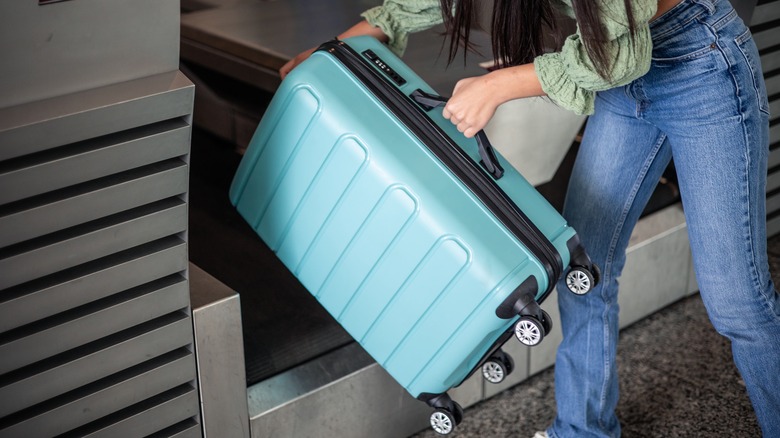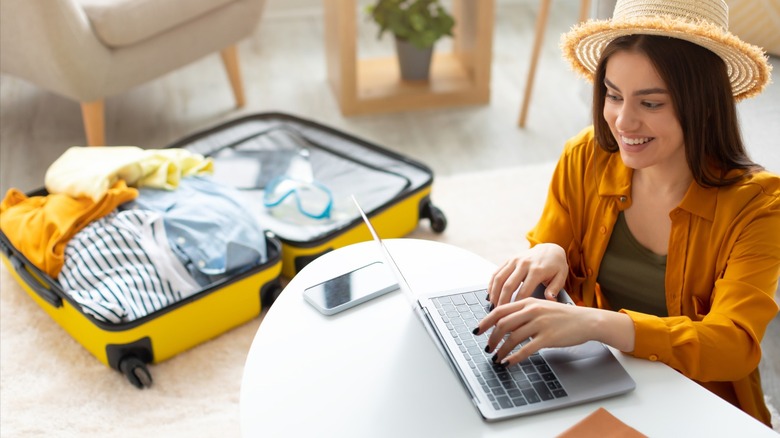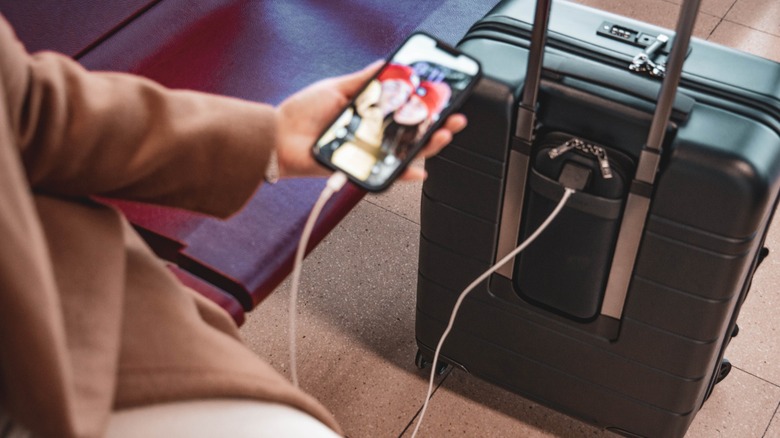TSA's Electronics Rules Explained: What's Allowed In Checked Bags & What's Not
The majority of people own at least one smartphone, with more owning other battery-powered devices. However, some of us might not know that the lithium batteries found in these devices are actually quite dangerous. The FAA says that lithium battery fire incidents that happen in-flight jumped by 388% from 2015 to 2023. In fact, a lithium battery fire caused the crash of UPS Flight 6 in 2010, which was a Boeing 747 that was known for carrying huge cargo loads and was carrying several pallets containing batteries.
Because of this, the federal agency has guidelines on what battery-powered devices passengers can put in their checked bags. The main reason is that there's no one inside the plane's cargo hold that can visually monitor it to spot smoke and flames and extinguish a fire should one occur. Furthermore, unlike what you see in the movies, the cargo hold is physically separate from the rest of the cabin. If a fire breaks out in the cargo hold and the onboard fire suppression system fails to extinguish it, no one can reach the fire to stop it from spreading.
Also, note that it's the FAA that set these rules that prevents passengers from having certain electronic devices in a checked bag. The TSA works with the agency to ensure that these gadgets do not slip through security and get on board the airplane's cargo hold.
Electronic devices allowed in checked baggage
The FAA strongly recommends that passengers put their devices containing lithium metal or lithium-ion batteries in their carry-on bags. This includes smartphones, laptops, cameras, smartwatches, handheld consoles, and other portable devices. However, you can put them in your checked luggage, provided they are, "completely powered off and protected to prevent unintentional activation or damage."
Note that while these are FAA regulations apply to all passengers and airlines, your carrier could impose some stricter rules. For example, the federal agency does not impose a quantity limit on these electronic devices for personal use, but American Airlines limits passengers to two of each device. So, if you're unsure, you should contact your airline to avoid inconveniences on your travel day.
Aside from that, you're not allowed to carry damaged or recalled batteries and electronic devices on board an airplane, whether checked-in or brought with you in the cabin (unless the battery is removed or made safe). If you remember the Samsung Note 7 fiasco from 2016, the FAA banned it because of a design flaw that caused it to spontaneously combust and explode. While this is unlikely to happen with today's phones, it's still good to stay updated on recalls for your devices to help stay safe in the air.
You must put these devices in your carry-on bag
There are specific items that the FAA prohibits from being put in checked luggage: spare (uninstalled) lithium metal and lithium-ion batteries and electronic smoking devices (also called vapes and e-cigarettes). Aside from needing to put these in your carry-on, the FAA also limits the capacity and number of power banks you can carry.
The FAA says that batteries at 100 Wh and below are safe to bring in the cabin of passenger aircraft. However, larger power banks with a capacity between 101 and 160 Wh need prior approval from your airline, while those that are more than 160 Wh are explicitly prohibited. A battery's Watt-hour (Wh) capacity is usually printed clearly on its case. But if you can't find it, you can compute it yourself by multiplying a battery's maximum voltage (V) by its milliampere-hours (mAh) and dividing by 1,000.
You can also only bring up to two large power banks (101 to 160 Wh capacity) with you, but you should check with your airline if they have stricter limits. The FAA does not set any limit on the number of smaller batteries (less than 100 Wh) you can carry, but Delta Air Lines will only allow you a maximum number of 20 spare batteries.
As for e-cigarettes, aside from putting it in your carry-on bag or on your person when you fly, you must also take effective measures to ensure it is deactivated while in flight. The FAA recommends removing the battery from the device or putting a protective cover or safety latch on the heating coil activation button, among others, to prevent accidents.


